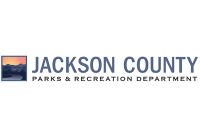Physicians, HRMC may partner on surgery center
The prospect of an outpatient surgery center in Haywood County has drawn support from 14 doctors willing to pitch in on a feasibility study to get the ball rolling.
Haywood Regional Medical Center will split the cost of a $40,000 study with interested physicians. It could lay the groundwork for a joint venture between the hospital and private doctors in the construction of a surgery center down the road.
A surgery center would be more convenient for patients, who now have to navigate floors of the hospital for even the simplest of outpatient procedures like cataracts and colonoscopies.
A new surgery wing was well on its way to a ground breaking early last year. Architects were in the final phase of the design, with interior color palettes already selected. But the entire project came crashing down when the hospital lost its Medicare and Medicaid status after failing federal inspections in early 2008. Savings squirreled away to pay for the surgery wing were spent instead to keep the hospital afloat until it rebounded from the crisis.
While involvement from 14 doctors in the feasibility study might sound unwieldy, Haywood Regional CEO Mike Poore welcomes the broad interest. The threshold for the venture to be successful is between eight and 10 physicians, so it’s good to have so many, Poore said.
“It is important to me to make sure we have physicians involved,” Poore said.
Related Items
The attitude marks a change from the former hospital administration, which excluded participation by physicians. For years, surgeons tried to make the case for a joint venture with the hospital to build and run a surgery center, but to no avail. Former CEO David Rice, known for his top down control of the hospital, wanted a surgery wing under the exclusive domain of the hospital rather than a joint venture preferred by the overwhelming majority of doctors.
A joint venture provides a better business model for doctors, who want more autonomy and to build equity in their own practice.
“I think it creates a better relationship between the hospital and physicians and helps with the recruitment and retention of physicians in the community,” said Dr. Chris Catterson, an orthopedist.
Stand-alone surgery centers are such common fixtures these days that the lack of one means some doctors wouldn’t consider coming here, according to Dr. Al Mina, a surgeon.
Mina said that a surgery center will streamline the process for patients. Check-in will be quicker. Families will have a better waiting area. Parking would be closer.
It’s also cheaper for the patient. Under the strange formulas used by insurance companies, the co-pay is lower for the same operation at a free-standing surgery center versus a surgery wing attached to a hospital, doctors explained.
“It’s important not just to have a fancy new building that people feel comfortable going to, but the out-of-pocket cost to the patient is lower from their insurance company,” said Dr. Richard Lang, a radiologist.
A stand-alone surgery center would also be cheaper to build than trying to shoehorn a wing onto the hospital, Mina and Catterson said.
The project being pushed by Rice had a price tag of $16.5 million. It not only included a makeover of the surgery wing, but also a new main entrance and lobby for the hospital, new offices for hospital administration and “shell space” for future expansion of the hospital. The new wing would have had an over-built foundation that could support up to seven stories in the future.
Poore is no novice when it comes to launching surgery centers. The consultants selected for the study, called Stroudwater Associates, did a similar study at the hospital in Georgia from which Poore moved from.
The consultants will evaluate the demand for a surgery center, factoring in demographics and HRMC’s market share.
“You don’t want to spend millions building one and find out you don’t have the volume to support it,” Catterson said.
The meat of the study will examine possible business models, such as how much will be owned and run by the hospital versus the doctors. Poore said he expects the consultants to develop a tier of options.
One final question is where to build it.
“There is no predetermined location. Part of the study is to take a look at possible locations,” Poore said.
Once the consultants get started, Poore expects the study to take less than two months.
The Haywood Regonal Medical Center Foundation had $400,000 in donations in the bank for the surgery support wing prior to when the crisis hits last year. A hospital board member asked at last week’s board meeting what will happen to funds raised for the surgery center.
“The surgery center has been put on the backburner, so donors can donate their funds elsewhere or their funds can be held,” said Robin Tindall-Taylor, Foundation director.









